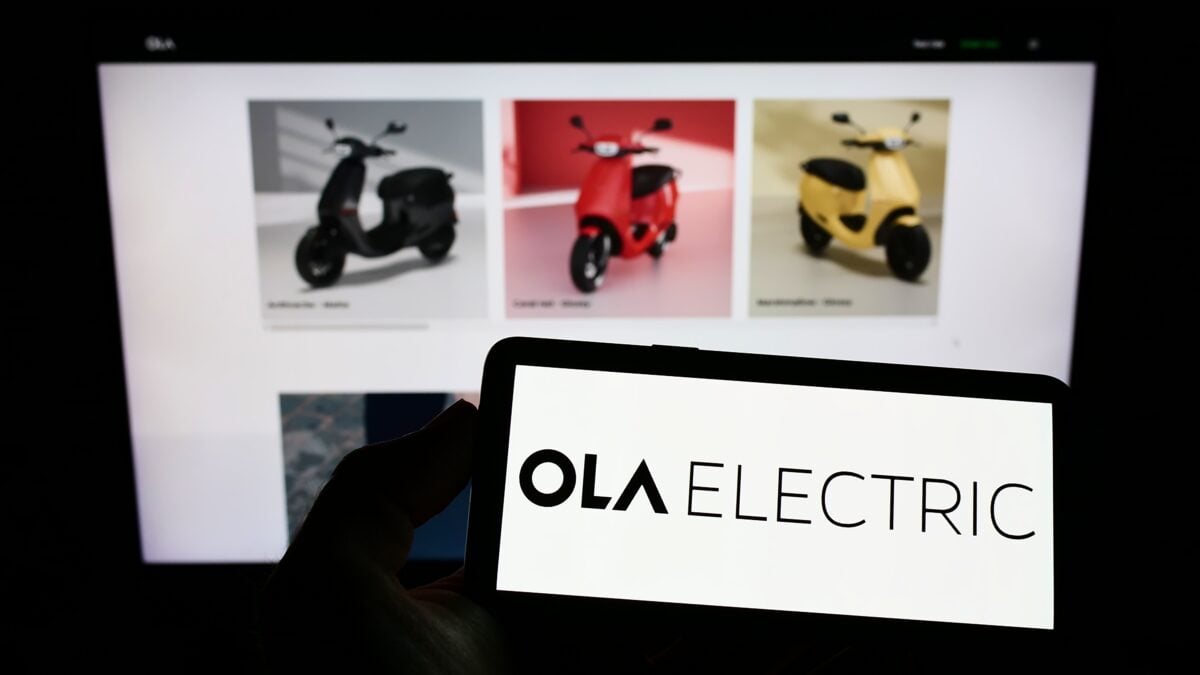TLDRs:
Contents
- Ola Electric unveils in-house 4680 battery and rare earth-free motor to boost EV resilience.
- Price cuts introduced for S1 Pro+ and Roadster X+ as Ola tackles declining market share.
- MoveOS 6 launched with enhanced features, signaling software focus for future scooters.
- Legacy automakers gain in India’s EV market, challenging Ola’s early dominance.
Ola Electric has launched its first in-house 4680 Bharat cell battery and a rare earth-free motor at its annual Sankalp event, held at the company’s Gigafactory in Tamil Nadu.
The company also debuted the S1 Pro+ scooter, powered by the new battery technology, while announcing price reductions for both the S1 Pro+ and Roadster X+ models.
The newly developed 4680 battery offers 10% higher energy density and a projected lifespan of around 15 years. Meanwhile, Ola’s motor uses ferrite instead of neodymium, reducing dependence on rare earth metals largely controlled by China, which has recently tightened export restrictions.
This breakthrough is aimed at mitigating supply chain risks and enhancing the sustainability and resilience of Ola’s EV production.
MoveOS 6 and Scooter Launch Plans
In addition to hardware improvements, Ola unveiled MoveOS 6, an upgraded operating system featuring new software capabilities for improved vehicle performance and user experience.
The company also announced plans to expand its product lineup, including the S1 Pro Sport scooter scheduled for launch in 2026 and the Diamond Head electric bike set for 2027.
These strategic updates come amid challenging market conditions. Ola’s share in India’s electric two-wheeler segment dropped to 16.8% in July 2025, a steep decline from earlier dominance. The company reported a net loss of 428 crore rupee (US$48.9 million) for Q1 2025, reflecting the capital-intensive nature of scaling EV production and the competitive pressures from legacy automakers.
Ola’s decline mirrors a broader trend in India’s EV market, where established manufacturers like Bajaj Auto and TVS Motor are reclaiming market share.
Bajaj and TVS now control 19.73% and 20.84% of the electric two-wheeler segment, respectively. Bajaj’s sales rose 125% year-on-year, while TVS achieved 44% growth, underscoring their ability to scale manufacturing, distribution, and brand trust more effectively than newer entrants like Ola.
This shift demonstrates that while startups can pioneer innovative categories, operational expertise and robust dealer networks provide a competitive edge once established companies commit resources to the transition.
Rare Earth-Free Motors: A Strategic Advantage
Ola’s rare earth-free motor positions the company for long-term supply chain security. With global reliance on Chinese exports of rare earth metals, companies producing motors without neodymium gain a critical strategic advantage.
Beyond cost savings, rare earth independence enables technological sovereignty and simplifies manufacturing processes.
The move is timely, as India faces a 78% decline in rare earth imports from China in April 2025, highlighting vulnerabilities in traditional EV supply chains. Ola’s early investments in alternate sourcing and magnet-free motor development have allowed the company to maintain production capabilities while competitors may face delays.
High Risk, High Reward
Ola’s ambitious investment in in-house cell manufacturing, despite heavy initial losses, reflects a strategic gamble on vertical integration.
The company’s cell division generated only Rs 3 crore in revenue while posting a loss of Rs 43 crore in Q1 2025, highlighting the financial challenges of scaling production. However, controlling key components could offer long-term advantages similar to Tesla’s Gigafactory model, where early losses eventually yielded industry-leading efficiency and cost control.


